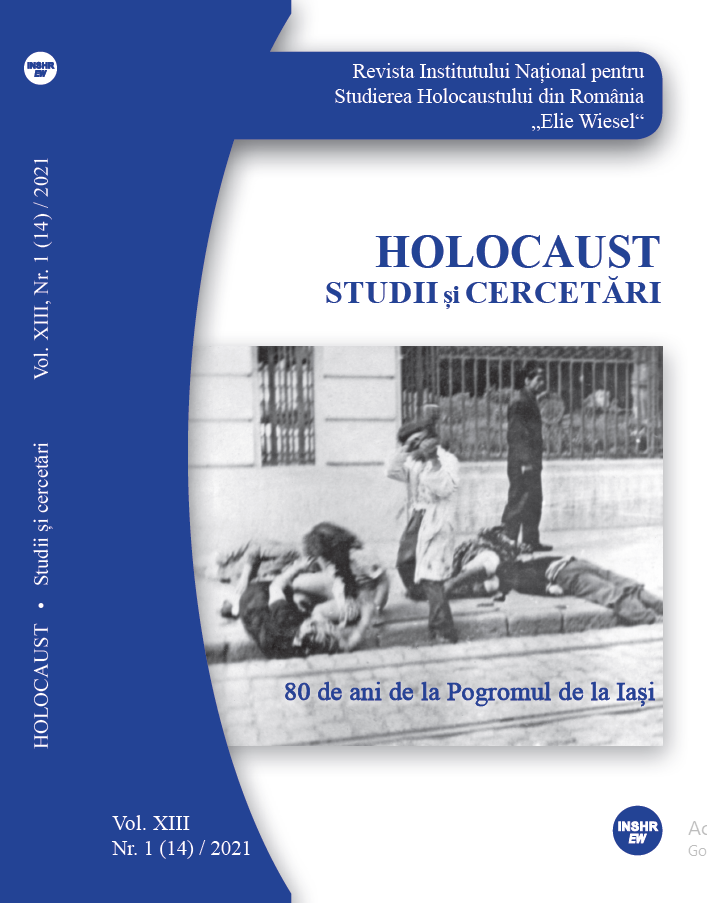The Trials of the War Criminals from the Iași Pogrom: Investigations, Convictions, Acquittals, Releases
The Trials of the War Criminals from the Iași Pogrom:
Investigations, Convictions, Acquittals, Releases
Author(s): Daniel-Valeriu BobocSubject(s): Law and Transitional Justice, WW II and following years (1940 - 1949), Fascism, Nazism and WW II, History of the Holocaust
Published by: Institutul National pentru Studierea Holocaustului din Romania ELIE WIESEL
Keywords: Iasi Pogrom;war criminals;political trials;communism;People's Tribunal;
Summary/Abstract: The trials of the war criminals involved in the Iași Pogrom were part of the general trend,at the end of World War II, to punish those who had killed civilians during the conflagration,in order to prevent further massacres in future wars. Romania was among the countries committed, through the convention with the United Nations, to punish the perpetrators. A legal framework in accordance with the Romanian legislation and with the principles established at the end of the war was adopted for this purpose. Adopting legislation and its implementation was a cumbersome process, meaning that repeated changes and adjustments were needed. The most important trial, that of the Iași Pogrom, took place almost four years after the beginning of the investigations. It was followed by other trials, soon after. The communist authorities tried to turn the trials into an ideological construct through mediacoverage, which was speculated by those who claimed the trials were politicized. In reality,those convicted for the crimes were proven guilty in court, and those in power were forced to accept the extension of investigations and convictions to others, based on the victims’ testimonies. The delay in the trials was a factor for the large number of people who escaped conviction, while the adoption of decree no. 421/1955 entailed the release of a large number of convicted persons, before the end of their sentence. The profile of convicted persons can be outlined from the victims’ statements. Not only employees of state institutions took part in the Pogrom, but neighbors, friends, co-workers, etc. In the case of certain categories, thenumber of convictions was higher than in others. This was due to the fact that local perpetrators were easier to identify, while others had a special status, mainly the military.
Journal: Holocaust. Studii şi cercetări
- Issue Year: XIII/2021
- Issue No: 14
- Page Range: 125-154
- Page Count: 30
- Language: English
- Content File-PDF

